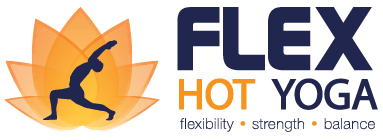Posture category of the month: Backbends
Sink into a deep backbend and open your heart
If you have ever gone into and then come out of a deep backbend, you know how delicious it is to breathe deeply and feel the wide open heart space that comes from opening and expanding your ribcage.
However, for many of us there is a scary element in allowing ourselves to sink into a backbend, as it requires trust in our own strength to hold it and safely re-emerge. So the month of April is dedicated to exploring different types of backbends and allowing ourselves to discover, practice and deepen.
Benefits you can expect when practicing backbends
There are three main types of backbends: Some use traction (e.g. Wheel Pose, Urdhva Dhanurasana), some leverage (e.g. Cobra, Bhujangasana) and some contraction, (e.g. Locust Pose, Salabhasana). Whilst working in different ways, they all share the main benefits on a physical and emotional level:
First and foremost, backbends increasing the mobility of your spine. By giving your spine this extra love and attention, you can improve your posture and alleviate some types of back and neck pain. This is especially helpful is you have a desk job and are sitting a lot during your day-to-day life.
Backbends stretch your quads and hip flexors and help open up the shoulders and chest. These areas can hold a lot of tension and unless stretched regularly can become immobile and rigid. This is not only uncomfortable but can lead to a loss of mobility in the long run.
Backbends are invigorating both physically and energetically. They build strength in your legs, arms and back muscles.
Because they open the chest and upper body, backbends stimulate the heart chakra (Anahata), which allows you to open more fully into your emotions, relationships and life itself.
Sometimes deep backbends can release stored emotions
As you mindfully do your work on a physical level, stored emotions like sadness, anger, hurt or grief can bubble up and be released in a safe, supportive environment. Allow yourself to be present with what arises and honour it, rather than trying to push it down.
Similarly, opening your heart in this way can lead to a tremendous sense of love, compassion or joy - one of those beautiful, natural yoga highs…
Contraindications - when you should NOT backbend
There are certain conditions that might be aggravated through backbending - hence, you should first consult with a doctor before leaning in. The most common issues are:
Lower back injuries
SI joint injuries
Sacrum injuries
Shoulder or neck injuries
Extremely tight hips
Counter pose or neutral?
Unlike many other asanas, backbends don’t call for a counter pose. Whilst you might think a forward bend would feel good, it might place too much stress on your spine. Instead, a neutral position might be more favourable. For example, after practising three rounds of Camel Pose (Ustrasana) you could move into Hero Pose (Virasana) for a moment and then relax in Child’s Pose (Balsana) for a few breaths.
Curious to learn more? Come along to Flex regularly and practice with us! There are over 25 classes/week, and we will practice Twists daily during all of April 2021!
For more details, visit EkhartYoga or Bodymindlife.




